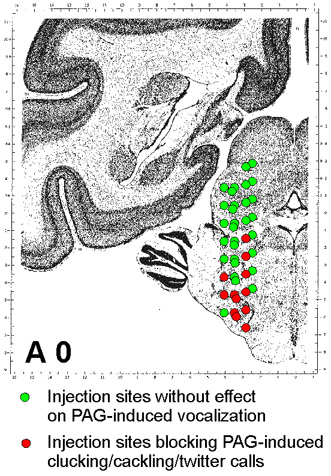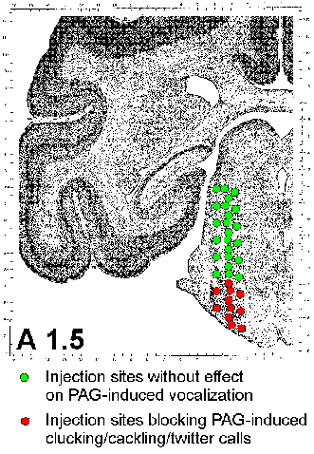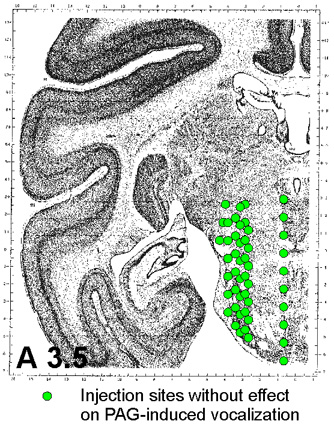Invited Symposium: Neural Mechanism of Mammalian Vocalization
| INABIS '98 Home Page | Your Session | Symposia & Poster Sessions | Plenary Sessions | Exhibitors' Foyer | Personal Itinerary | New Search |
Introduction
Several observations indicate that the periaqueductal grey of the midbrain (PAG) plays an important role in vocal control: Electrical stimulation of this structure yields vocalization in various species. Lesions of the PAG can cause mutism. Single-unit recording reveals vocalization-correlated activity. It is still unclear, however, by which pathways the PAG controls the phonatory motoneurone pools. As the PAG projects to the nucl. retroambiguus, a structure directly connected with the laryngeal and expiratory motoneurones, it has been hypothesized by Holstege (1989) that the final common pathway for vocalization consists of a PAG-retroambiguus-phonatory motoneurone chain. The present study is an attempt to find out whether the nucl. retroambiguus is the only relay station of the final vocalization pathway.
Materials and Methods
In the squirrel monkey (Saimiri sciureus), electrodes were implanted into the PAG at sites yielding vocalization when electrically stimulated. Then, injections of kynurenic acid (5 µg in 0.25 µl), a non-specific glutamate antagonist, were made stereotactically at numerous positions within the pons and rostral medulla, looking for sites capable of blocking PAG-induced vocalization.
Results
Out of the 188 injection sites tested, 26 were able to block periaqueductally elicited vocalization. These sites were found in the caudal pons around the ventral nucleus of lateral lemniscus and superior olive as well as in the dorsolateral pontine reticular formation. Bilateral injections were not more effective than ipsilateral injections. Injections made contralateral to the stimulation sites were without effect. The blockade was limited to one particular class of call types, the so-called clucking/cackling/twitter calls - which are all characterized by extensive frequency modulations. PAG-induced purring, groaning, shrieking and peeping calls could not be abolished by pontine injections. Injections into the area of the rostral nucl. ambiguus, even if bilateral did not abolish vocalization, but changed its acoustic structure.
Discussion and Conclusion
The results suggest that the nucl. retroambiguus is not the only relay station of the vocalization-controlling pathway descending from the PAG to the phonatory motoneurones. Critical processing steps, at least with respect to frequency-modulated calls, also seem to take place in the caudolateral pons.
Figures

Figure 1.

Figure 2.

Figure 3.

Figure 4.
| Discussion Board | Previous Page | Your Symposium |